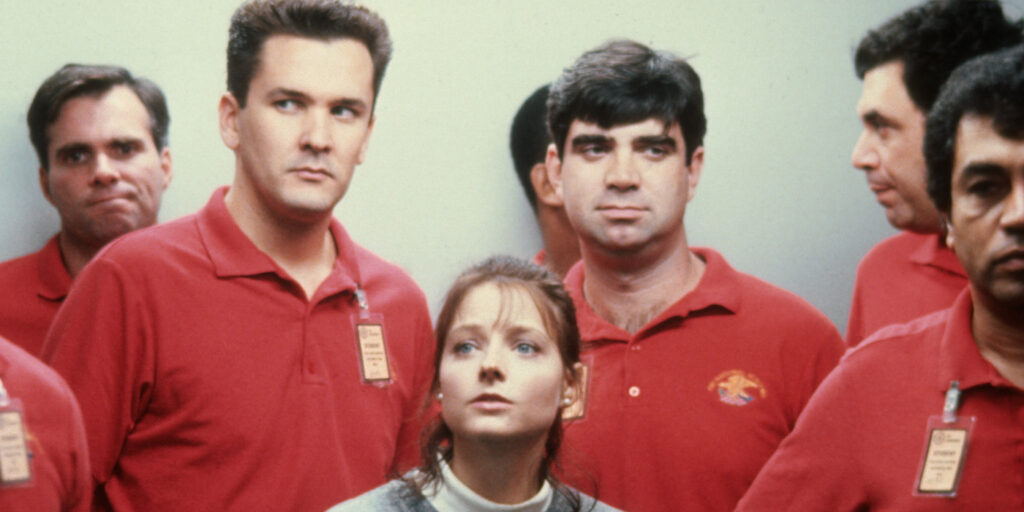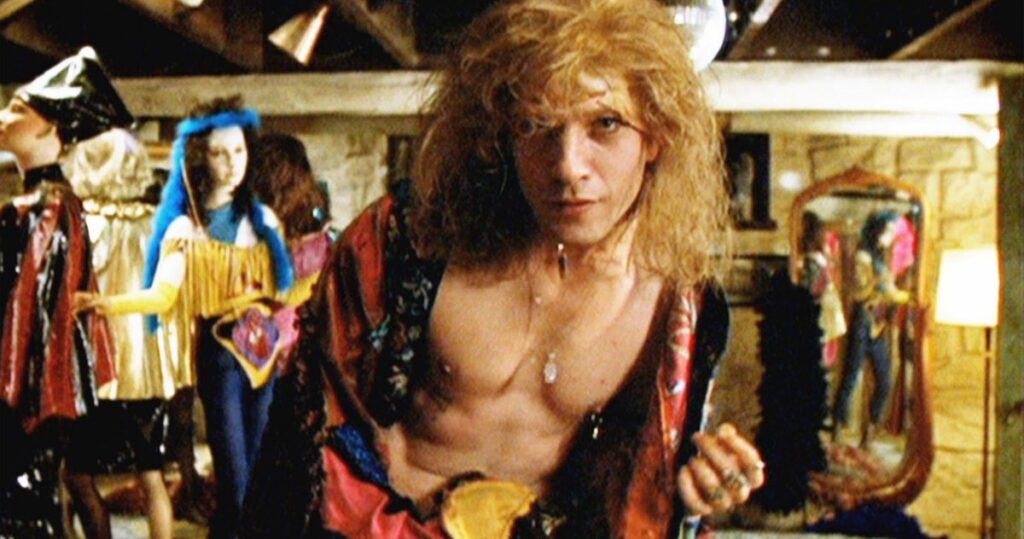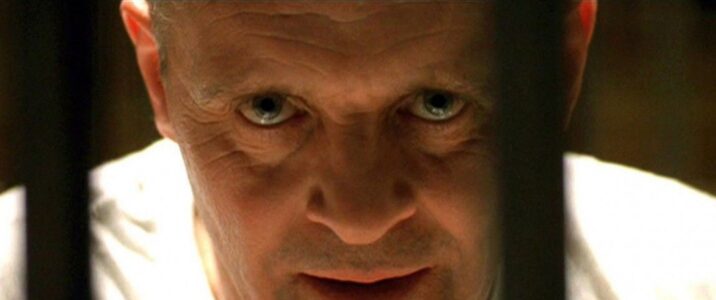“A census taker once tried to test me. I ate his liver with some fava beans, and a nice chianti.” The piercing, predatory expression in Sir Anthony Hopkins’ eyes, coupled with the following ad-libbed suckling of his teeth, is one of many instances burned into filmgoers’ minds of Dr. Hannibal “The Cannibal” Lecter. Although previously portrayed by Brian Cox in Michael Mann’s underrated neo-noir Manhunter (1986), Hopkins’ take on the Thomas Harris character not only catapulted his career into Hollywood stardom but introduced audiences to a different kind of movie monster, more recognizably familiar than the Michael Myers or Freddie Kruegers of the 1970s and 80s and was listed by the American Film Institute’s 100 Heroes & Villains as the #1 Movie Villain of all time.
Yet for all the well-deserved attention and praise Hopkins received following Lambs release, what left more of an impression on me than the chilling Dr. Lecter upon revisiting the film was its heroine, Clarice Starling. The character is also highly regarded, if somewhat overshadowed by Hannibal, ranking on the AFI’s greatest Movie Heroes, albeit at #8. Although not as flashy as her foil, Starling is no less significant to the film’s success, and inarguably its’ moral compass.
Jodie Foster portrays Clarice as a sharp-minded and fiercely determined individual. Her desire to become an FBI agent stems from her late father’s service as a police officer, and she seeks approval from a surrogate father figure in her superior, Jack Crawford (Scott Glenn), yet she refuses to be put down by her male colleagues and peers, particularly the smarmy Dr. Chilton (Anthony Heald). Foster also displays a powerful degree of empathy for the skinned female victims of Buffalo Bill (Ted Levine). Notice how in the scene where she and Crawford analyze Bill’s latest killing, she struggles in maintaining her composure, not because of her sensitivity to grisly crime scenes, but because seeing this innocent girl treated with such deranged inhumanity breaks her heart.

Her desire to save kidnapped Catherine Martin (Brooke Smith) from suffering the same fate in Bill’s hands, as conveyed in Ted Tally’s screenplay and Foster’s performance, would be enough for us to root for Clarice. But Jonathan Demme’s direction of shooting POV shots from Starling’s perspective, with most of the male characters looking directly into the camera with leering condescension helps us connect with her on a psychological level. We find ourselves not only sharing her conviction, but her sense of alienation as well in being not only a rookie FBI agent, but one of its few females.
That said desire to rescue Catherine stems from a childhood trauma which lends to the title, as revealed in the film’s centerpiece. It is the best and most crucial scene in the entire movie, as all the elements come together in creating a masterful sequence, rich in character study, mood, and atmosphere. Hopkins’ line of questioning is calm, but intense, like a psychiatrist that hungers not for the human flesh, but the soul. As he talks directly into the camera, we feel his gaze penetrate us. Foster’s direct gaze into the camera allows us to see her at her most vulnerable, her futile efforts to end “the screaming of the lambs” tormenting her still. Even the sound design subtly transports us into Clarice’s mind as we hear a faint howling wind, recalling the bitter cold of her cousin’s Montana ranch where the lambs were being slaughtered. It still stands as one of the greatest scenes in cinema history.
If there is one misgiving which still haunts Lambs thirty years on, it is in the characterization of Buffalo Bill. Real name Jame Gumb, we learn that he skins his victims to create a female body suit to cope with his self-loathing from living in his own. Despite the film explicitly stating that he is not a transexual (‘transsexuals are very passive”, explains Clarice in one of the film’s few glaringly clumsy lines), LGBTQ groups still cried foul at Hollywood portraying yet another gay character as a psychopathic killer. At the time of Lamb’s release, Hollywood had an unfortunate history of presenting queer characters in a negative light, including recently portraying them as antagonists in features throughout the 80s to early 90s, like Paul Schrader’s American Gigolo (1980) and Paul Verhoeven’s Basic Instinct (1992).
Despite Demme’s attempts to atone by following up Lambs with Philadelphia (1993), the first Hollywood film to address AIDS and its effect on the LGBTQ community, Gumb still proves to be a major blemish on what is an otherwise flawless classic. Whenever we get POV shots from his perspective, it is through his night-vision goggles. This visualizes his discomfort in seeing things through his own eyes, but the green, fuzzy imagery creates a warped perception, putting the audience at arm’s length and preventing connecting with him. Even his relationship with his pet dog, Precious, his sole one, feels played for gallows humor in disturbing situations, including the infamous “lotion” scene. This serves as a stark contrast to Francis “The Tooth Fairy” Dolarhyde’s doomed romance with Reba McClane in Manhunter & Red Dragon (2002) lending a sympathetic facet to an otherwise disturbed monster. A more incisive character study of Jame would have improved what is otherwise a perfect film in Lambs.

Problematic antagonist aside, Silence of the Lambs still holds up as not only a masterpiece in the late Demme’s distinctive film career, but as a high-rate psychological thriller that incorporates the classic horror movie tropes and lends it a human face to its lead characters, conjuring a more frightening experience. Clarice Starling’s compassion and youthfully fierce tenacity make her a gripping heroine, and Hannibal Lecter’s intimidating presence and sharp intellect deservedly place him in the same company of such iconic villains as Norman Bates from Psycho (1960). To see the potential for incorruptible good, as well as unspeakable evil from these people is what makes Silence of the Lambs a wholly disturbing, yet mesmerizing experience still after all these years.
